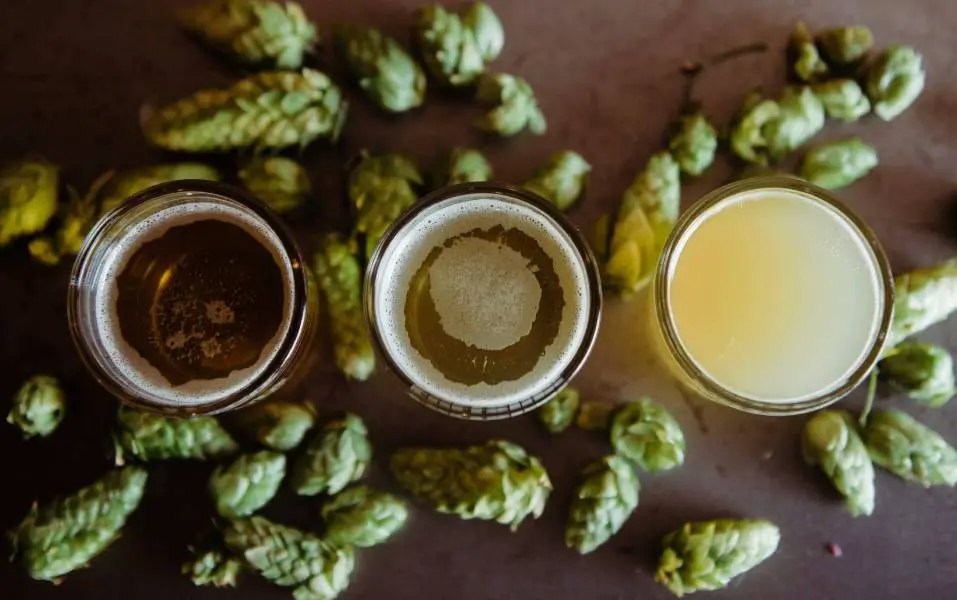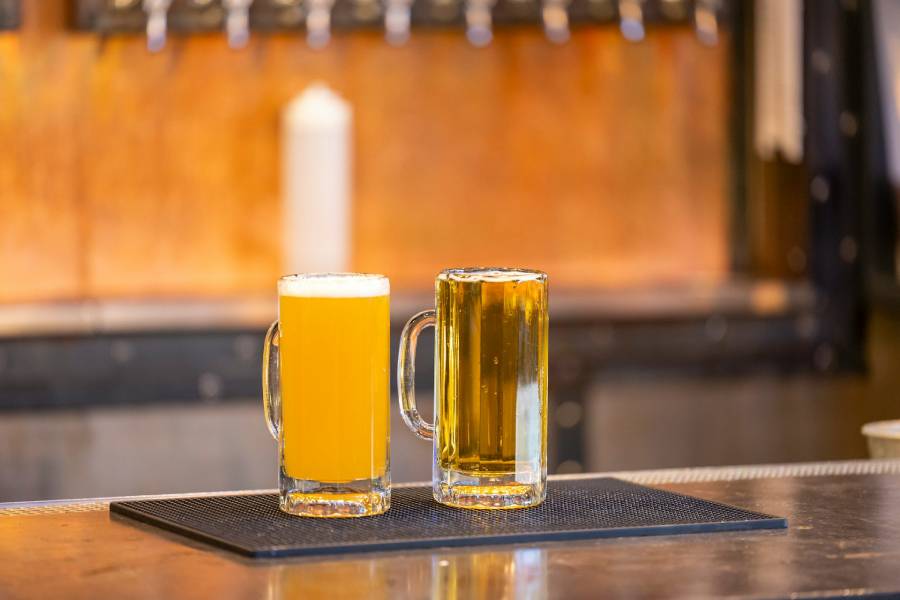What Are the Main Ingredients of Beer and how do they shape its character? Every pint tells a story of craftsmanship that combines tradition and innovation. From the first sip to the last, beer’s magic lies in the interplay of its components. Understanding these elements reveals why no two brews taste the same.
What Are the Main Ingredients of Beer?
The main beer ingredients are water, malted grains, hops, and yeast. Water makes up most of the brew and influences its overall profile. Malted grains provide fermentable sugars that give beer its body and flavor. Hops contribute bitterness and aroma, while yeast drives fermentation, creating alcohol and carbonation.
It’s important to remember that the quality of the ingredients you use determines the final product. Always use high-quality water without strong odors or flavors. Select fresh hops and malts that match your desired beer style. Handle yeast carefully, maintaining proper temperatures during fermentation to achieve balanced flavors and consistent results.
The following is detailed information about the 4 main ingredients in beer to help you understand better:
Water: The Foundation of Beer
Water is the most abundant ingredient in beer, forming its foundation and influencing its overall taste. Its mineral content, such as calcium and magnesium, can impact the flavor and mouthfeel of the beer. Hard water is ideal for certain styles like stouts, while soft water suits lagers. The purity of water directly affects the final brew.
For high-quality results, use water free from strong odors or impurities. Many brewers filter or adjust their water to match the style they’re brewing. Adding minerals can enhance flavor profiles, depending on the recipe.

Malted Grains: The Soul of Beer
Malted grains provide the sugars needed for fermentation. During malting, grains like barley are soaked, germinated, and dried to develop enzymes and flavors. These grains define the beer’s body, sweetness, and color. Different malts create unique profiles, from light and crisp lagers to rich and roasty stouts.
For the best results, use fresh, high-quality malted grains suited to your beer style. Base malts provide fermentable sugars, while specialty malts add depth and complexity. Crushed grains should be milled evenly to extract their full potential during mashing.
Hops: The Flavor Enhancer
Hops are the vibrant ingredient that defines a beer’s aroma and bitterness. Derived from the flowers of the hop plant, they balance the sweetness of malt with a pleasant sharpness. Hops can add flavors ranging from citrusy and floral to earthy and piney, depending on the variety. The timing of hop additions during brewing influences whether they contribute bitterness, aroma, or both.
Fresh, well-stored hops are key to achieving bold and consistent flavors. Brewers often experiment with different hop varieties or blends to create signature profiles. Late additions or dry hopping enhance aromatic qualities without adding bitterness.

Yeast: The Hidden Worker
Yeast is the unseen hero of beer brewing that transforms sugars into alcohol and carbonation through fermentation. Beyond this, yeast can influence a beer’s flavor with notes like banana, clove, or spice, depending on the strain used. Ale yeasts work at warmer temperatures, creating bold flavors, while lager yeasts ferment cooler for cleaner finishes. The choice of yeast often determines the personality of the beer.
Using fresh and active yeast is vital to achieving consistent fermentation and avoiding off-flavors. Proper temperature control during fermentation helps yeast thrive and produce desired flavor profiles. Some brewers experiment with wild or mixed yeast strains for unique and complex results.
Other Beer Ingredients and Additions
Beyond the four main ingredients, brewers often use additional elements to enhance flavor, aroma, and texture. These creative additions give each beer its unique character and appeal.
- Fruits: Fresh or dried fruits like cherries or mangoes add sweetness and tang. They’re often used in wheat beers or sour styles for vibrant flavor.
- Spices and Herbs: Ingredients like coriander, cinnamon, or basil introduce warmth or freshness. These are commonly found in holiday brews or experimental craft beers.
- Adjunct Grains: Corn, rice, or oats can lighten the body or add creaminess. Adjuncts are frequently used in lagers or stouts for specific textures.
- Honey and Maple Syrup: These natural sugars contribute subtle sweetness and depth. They ferment into alcohol while leaving behind unique flavor notes.
- Coffee and Chocolate: Perfect for stouts and porters, these additions bring bold, rich flavors. Coffee and chocolate complement roasted malts for a dessert-like experience.
Frequently Asked Questions
Is Beer 100% Natural?
Beer can be 100% natural if brewed with pure, unprocessed ingredients like water, malt, hops, and yeast. Many craft brewers prioritize natural methods and avoid artificial additives. Some mass-produced beers may include preservatives or adjuncts for cost efficiency. Choosing craft or traditional brews increases the chances of enjoying a natural product.
What Type of Beer Is Heineken?
Heineken is a pale lager with a crisp and refreshing taste. It features a balanced flavor with subtle malt sweetness and mild hop bitterness. Brewed using Heineken’s signature A-yeast, it has a clean, slightly fruity finish. Its consistency and global recognition make it a popular choice among lager enthusiasts.
What Is the Oldest Beer in the World?
The oldest beer in the world is believed to be brewed by Weihenstephan Brewery, established in 1040 in Bavaria, Germany. This historic brewery still produces beer today. Its legacy reflects centuries of brewing tradition. Weihenstephan’s beers are celebrated for their quality and craftsmanship.

Conclusion
Beer is made from four primary ingredients: water, malted grains, hops, and yeast. Each plays a distinct role, from providing structure and flavor to driving fermentation. Variations in these components create a diverse range of beer styles. Understanding these basics highlights the artistry behind crafting this popular and timeless beverage.











